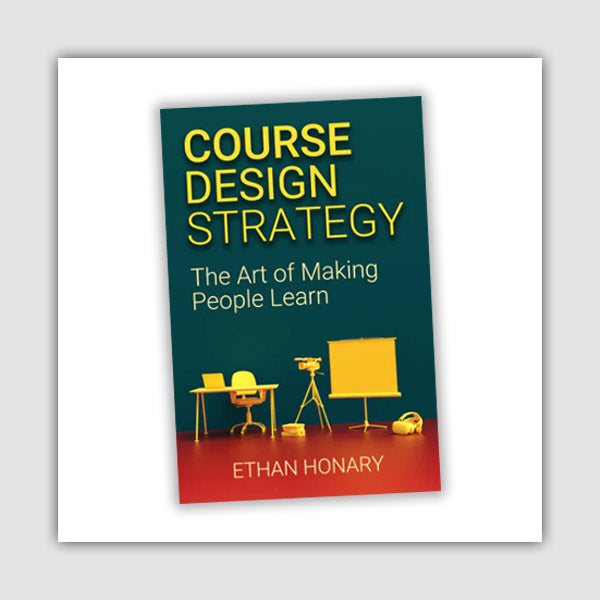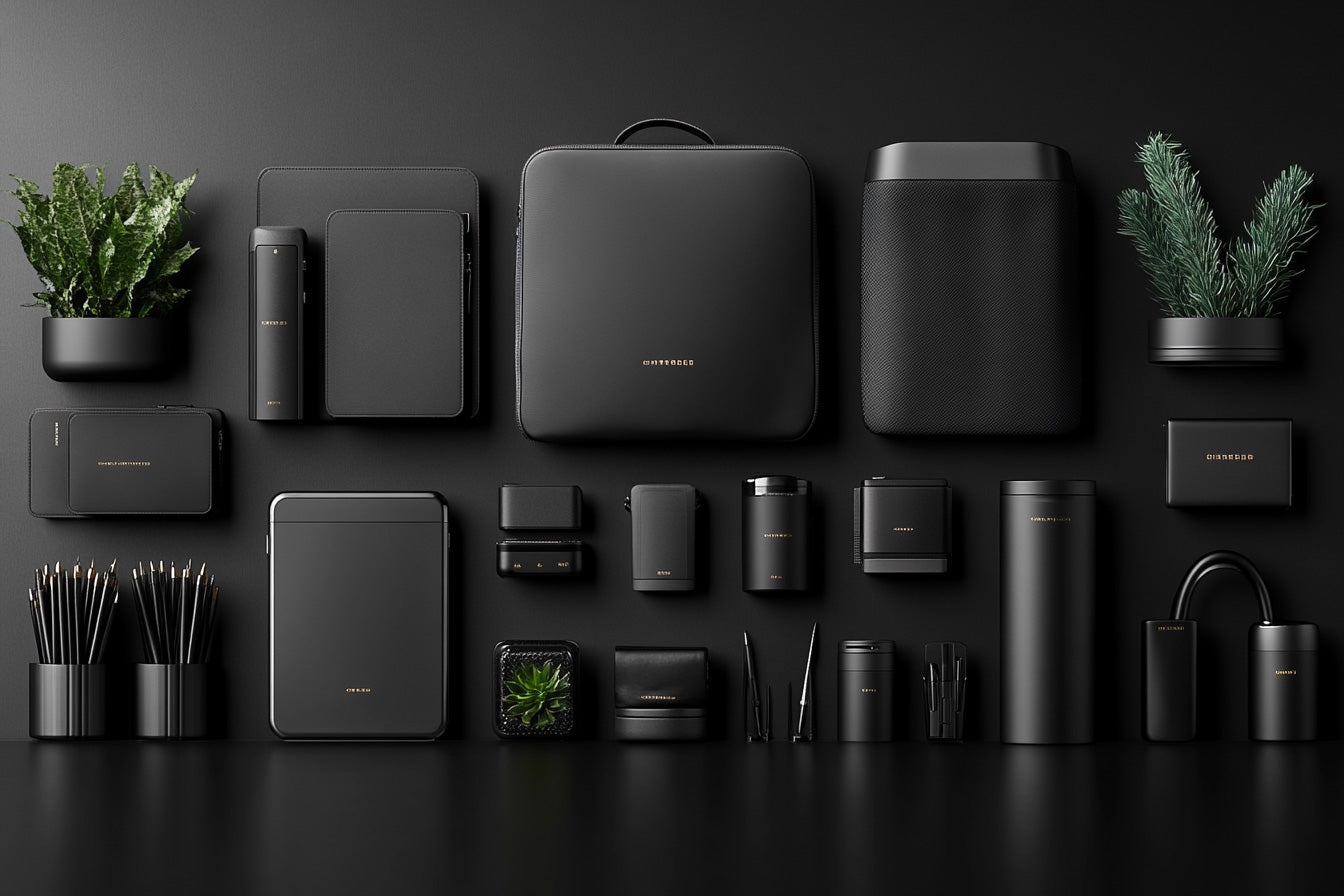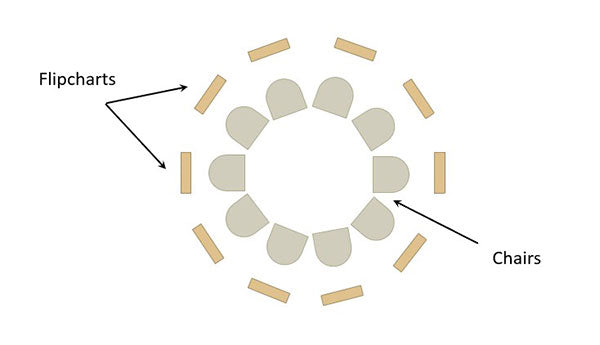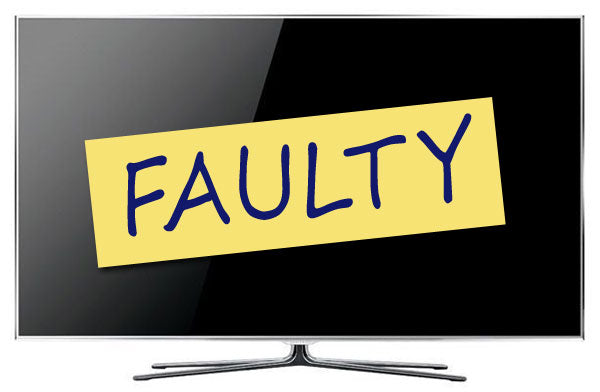Purpose
The Creative Pattern Puzzle Challenge is designed to hone skills in creativity, idea generation and management, project management, and team building. By engaging delegates in the manipulation of abstract concepts and ideas through a tangible, interactive format, this exercise aims to strengthen problem-solving capabilities, encourage innovative thinking and promote effective collaboration within a team.
The core aim is getting team members work together on a common task. You can observe delegates as they approach the problem together and you can use this as a template for a variety of exercises on problem solving and decision making. Tailor it based on the topic you are teaching.
Objective
Delegates will work in groups to organise mixed-up ideas into coherent structures, such as hierarchies, timelines, or categories, by physically manipulating puzzle pieces. This requires applying critical thinking to categorise concepts, sequence events, or identify similarities and differences, encouraging a deeper understanding of the topic at hand.
What You Need
- Envelopes filled with cards, each bearing a key idea related to the topic of discussion. Various example sets are provided at the end as reference. You will need to prepare this before the course. You need an identical set for each group.
- Large workspaces or tables for each group.
- Optional colour-coded paper or markers for categorising ideas.
- Optional blank cards.
Setup
- Before the session, choose a main topic of focus for this exercise.
- Prepare the set of cards with key ideas or concepts related to the training topic (like the sets provided at the end). These could range from steps in a process to elements of a strategy, or even contrasting viewpoints on a subject matter. Ensure there is a logical way to organise these ideas, but don’t make it immediately apparent to the delegates.
- Divide the class into small groups of 2-3 delegates.
- Hand out an envelope to each group. Each envelope should contain the same set of mixed-up idea cards.
- Explain to the groups that their task is to sort these ideas into a coherent structure or pattern. Clarify that they can organise the cards into hierarchies, sequences, categories, or any logical pattern they deem appropriate. Encourage creativity in their approach.
- Allocate 15 minutes for groups to sort the ideas, categorise them or arrange them. This step highly depends on what you are teaching delegates in the course and whether you want them to approach this in any way they like or if you want them to use a specific method.
- Optionally you can also give them blank cards so they can add new related ideas to the set that are not already included. This can itself be a creative process to expand on the current ideas and you can later get the groups to compare their new original ideas together.
- Ask groups to prepare to present their ideas and approach. They can nominate one of their team members to be the presenter.
- Bring back everyone together and get each team to present their cases and their approach. Allocate about 20 minutes for this part.
- Encourage feedback from other groups and lead to a general discussion.
Timing
Explaining the Exercise: 5 minutes
Activity: 15 min for idea sorting and prepare to present + 20 min for each group to share their structure, explain their thought process and specific approach
Group Feedback: 10 minutes
Discussion
After all groups have shared their patterns and the reasoning behind them, lead a debriefing session. This discussion will help cement the lessons learned during the activity and encourage delegates to apply these insights in their professional roles.
Ask delegates:
- What strategies did you employ to start organising the ideas?
- How did your team decide on the final structure?
- Were there any disagreements on how to categorise ideas, and how were they resolved?
- How did this exercise challenge your understanding of the topic?
- In what ways did this activity highlight the importance of teamwork and communication in project management?
- Can you think of real-life applications of the skills practiced in this exercise?
Example Set of Key Ideas for 3 Subjects
Instructions for Use
- For each example set, each of the concepts should be printed on individual cards.
- Insert a card for each concept into an envelope. Optionally, consider including some concepts more than once if they might fit into multiple categories, if their importance warrants further discussion or because of a specific method you want them to use in this exercise.
- Direct groups to organise these concepts into a structure that reflects their collective vision for a sustainable, reusable space rocket project. This might involve categorising them into technical, environmental, and economic themes, sequencing them based on the stages of development and operation or arranging them to highlight dependencies and relationships.
Subject 1: Sustainable Development of a Reusable Space Rocket
This set encourages a deep dive into the specific challenges and solutions associated with developing reusable rockets in a sustainable manner, stimulating discussion on innovation, efficiency, and the broader impacts of space exploration on the environment and society.
List of Concepts and Ideas:
- Reusable Rocket Components - Design elements that allow parts of the rocket to be reused across multiple launches.
- Propellant Efficiency - Innovations in fuel composition and engine design to reduce the amount of propellant needed.
- Low-Emission Fuel Types - Development and use of fuels that produce fewer greenhouse gases.
- Aerodynamic Design - Enhancements in the rocket’s shape and structure to reduce atmospheric drag and fuel consumption.
- Lightweight Materials - Use of advanced materials that reduce the overall weight of the rocket, improving fuel efficiency.
- Recovery and Refurbishment Processes - Methods for safely recovering used rocket components and preparing them for subsequent launches.
- Lifecycle Analysis of Rocket Materials - Evaluation of environmental impact of materials used in rocket construction over their entire lifecycle.
- Economic Models for Reusability - Financial analyses that validate the cost-effectiveness of developing and using reusable rockets.
- Environmental Impact Assessments - Studies on the ecological footprint of rocket launches and component recovery operations.
- Technological Innovations in Spacecraft Design - Breakthrough technologies that contribute to making spacecraft more sustainable.
- Regulations and Standards for Space Debris - Policies aimed at minimising space debris and ensuring the sustainable use of outer space.
- Public-Private Partnerships in Space Exploration - Collaborations between governments and private companies to advance sustainable space travel.
- Education and Public Awareness - Initiatives to increase understanding of the importance of sustainability in space exploration.
- Global Cooperation in Space Sustainability - International efforts to share knowledge and resources for sustainable space exploration.
- Future Scenarios for Space Exploration - Predictions and plans for how space travel might evolve with a focus on sustainability.
Subject 2: Synthetic Biology and Biomanufacturing
This collection of concepts provides a look into the revolutionary domains of synthetic biology and biomanufacturing, offering insights into how these technologies are reshaping industries, healthcare and environmental management. Through an exploration of genetic engineering, biofabrication and the synthesis of biological systems, delegates are encouraged to engage with the possibilities and challenges presented by these fields. Create a discussion on the sustainable applications of synthetic biology, its role in addressing global challenges and the ethical implications of its widespread adoption.
List of Concepts and Ideas:
- Gene Editing Techniques - CRISPR-Cas9 and beyond for precise modifications in living organisms.
- Bioreactors for Sustainable Production - Use of bioreactors in producing pharmaceuticals, food and biofuels.
- Synthetic Organisms for Environmental Remediation - Engineered microbes to clean pollutants and restore ecosystems.
- Biofabrication of Materials - Creating materials like bioplastics and lab-grown leather.
- Personalised Medicine via Synthetic Biology - Custom treatments and drugs designed for individual genetic profiles.
- Artificial Photosynthesis Systems - Mimicking plant processes to convert sunlight into energy or fuel.
- Bioluminescence in Urban Lighting - Using genetically modified organisms for natural, sustainable lighting solutions.
- Agricultural Improvements through Genomics - Enhancing crop resistance to pests and environmental stress.
- Regulatory and Ethical Frameworks - Guidelines for the safe and ethical use of synthetic biology.
- Public Engagement and Education - Increasing awareness and understanding of synthetic biology’s benefits and risks.
- Nano-biotechnology in Medicine - Nanoscale biological processes for health diagnostics and drug delivery.
- Biosecurity and Dual Use Concerns - Addressing the potential misuse of synthetic biology for harmful purposes.
- Ecosystems Engineering - Designing and controlling ecosystems for biodiversity conservation and human benefit.
- Computational Modelling in Bioengineering - Simulation tools for predicting and designing biological systems.
- Sustainable Food Systems - Lab-grown meat and genetically modified crops for food security.
Subject 3: Neuro-Enhancement Technologies and Cyber Implants
This set invites participants to explore the cutting-edge field of neuro-enhancement technologies and cyber implants, delving into the transformative potential these innovations hold for human cognitive and sensory abilities. By examining challenges, ethical considerations, and the latest advancements, this discussion aims to ignite a conversation on the future of human augmentation and the balance between technology and ethics. It encourages discussion on what it means to be human in terms of capability, identity and society at large.
List of Concepts and Ideas:
- Brain-Computer Interfaces (BCIs) - Devices that enable direct communication between the brain and external technology.
- Neuroprosthetics for Sensory Enhancement - Implants that enhance or restore sensory functions like vision and hearing.
- Memory Enhancement Implants - Devices or treatments that improve memory retention and recall.
- Cognitive Load Management - Technologies to enhance focus, reduce mental fatigue and manage information overload.
- Emotional Regulation Devices - Implants or wearables that help control emotions and mental health.
- Ethical Considerations of Neuro-Enhancement - Debates around consent, accessibility and the potential for inequality.
- Neural Dust - Minuscule, wireless sensors for monitoring brain activity and stimulating neurons.
- Cybersecurity for Neural Devices - Protecting brain-computer interfaces from hacking and unauthorized access.
- Augmented Reality (AR) Neural Interfaces - Integrating AR technology with BCIs for enhanced interaction with digital environments.
- Neuroplasticity Enhancement - Techniques and devices that promote the brain’s ability to form and reorganise synaptic connections.
- Neuropharmacology and Gene Therapy - Advanced drug delivery systems and genetic treatments for neurological enhancement.
- Regulatory Frameworks for Implants and Enhancements - Policies governing the development, approval and use of neuro-enhancement technologies.
- Social Implications of Enhanced Beings - The impact of neuro-enhancement on society, work and human relationships.
- Brain Mapping and Simulation - Comprehensive mapping of the brain to inform the development of neuro-enhancement technologies.
- Future of Learning and Skill Acquisition - How neuro-enhancement could revolutionise education and vocational training.
Soft Skills Training Materials
Get downloadable training materials
Online Train the Trainer Course:
Core Skills
Learn How to Become the Best Trainer in Your Field
All Tags
Training Resources for You

Course Design Strategy
Available as paperback and ebook

Free Training Resources
Download a free comprehensive training package including training guidelines, soft skills training activities, assessment forms and useful training resources that you can use to enhance your courses.

Our Comprehensive Guide to Body Language

Train the Trainer Resources
Get Insights - Read Guides and Books - Attend Courses
Training Materials
Get downloadable training materials on: Management Training, Personal Development, Interpersonal Development, Human Resources, and Sales & Marketing














Leave a comment
All comments are moderated before being published.
This site is protected by hCaptcha and the hCaptcha Privacy Policy and Terms of Service apply.